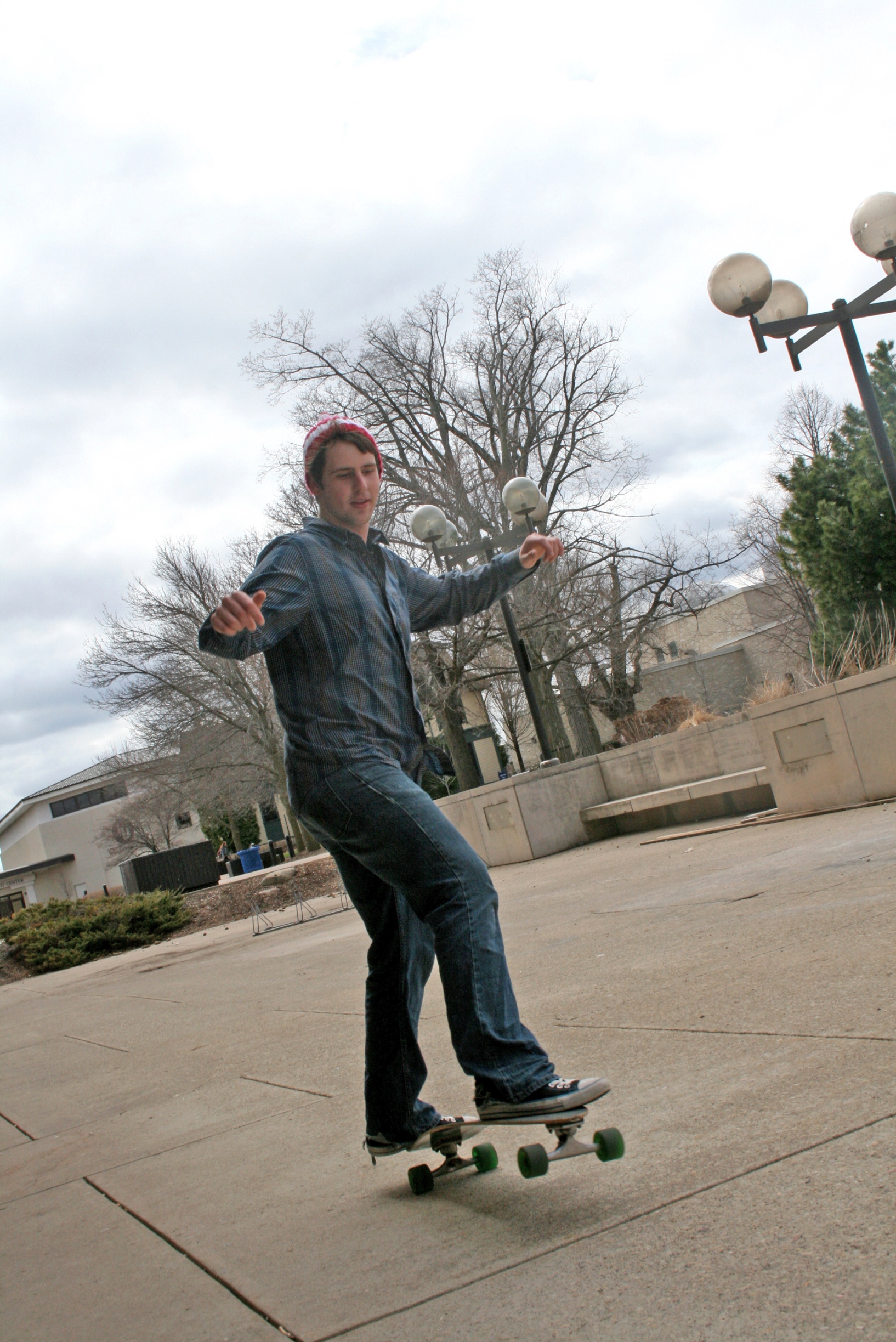
(Photo by Rachel Krivich)
There are times when I am walking to my next class, and I hear a distinctive grinding sound behind me getting louder and louder. Nowadays I just drift to one side of the path without a thought and continue on my way.
But I remember those times when I would hear that grinding noise and think something was about to run me over: I would lunge towards the grass and stare beadily at the back of the longboarder passing me by, and I would wonder at the audacity and individualism of punk skaters.
This was a slight misconception on my part, because longboarders cannot be associated with one particular subculture. Longboards and skateboards are indeed siblings: They are both wooden boards with four wheels. However, they differ in that longboards can reach up to six feet in length — hence their name — and their wheels are about 20 mm thicker in diameter.
The most basic difference between them, though, lies in their function. Unlike the aerial virtuosity and astoundingly constricting pants associated with skateboarders, longboarders sail through the walkways of college campuses nationwide to get to their next class, or to do just that — to sail the flat concrete walkway, to experience the pleasure of riding the winds.
Freshmen Chewy Grant-Dixon, a longboarder at Lawrence, describes the activity as an “expression of freedom.”
“I ride for fun and use it to go exploring. It’s also an all-body workout to keep the longboard going,” he said.
For sophomore Alec Robinov, “It’s fun and exciting and great for transportation … When the day is all over and no one is walking around, my roommate and I will usually go out and skate around Appleton. It’s a really nice way to blow off some steam.”
In that respect, the longboard, unlike the skateboard, could be seen as something unexpectedly universal, something that could convey the insouciance of youth, the quiet joy that comes from standing still and feeling the wind on your face.
In any case, the longboard seems to be an ideal transportation device for small distances. More fluid and less cumbersome than the bike, it can be carried, and it allows one to weave between students in more crowded spaces — no bike horns or “watch outs!” required.
When asked if he feels self-conscious sweeping past others on his longboard, Robinov replied, “I don’t feel bad at all. Most people meander out of the way when they hear the wheels, and for the most part people are easy to get around.”
It appears that Lawrentians have generally adjusted themselves to this relatively recent phenomenon.
Grant-Dixon guesses that other students “think I’m a hippie [for longboarding],” but he has noticed a relatively diverse range of longboarders at Lawrence. According to Robinov, Lawrence has witnessed a “definite rise” in longboarders.
“Last year it was just a few people who never communicated with one another,” Robinov said, but with a bounty of longboarders from this year’s freshmen class, he hopes to “start getting together and maybe even organize some events in Appleton.”
Of course, he encourages any people “kicking the tires” — kicking the wheels? — to think about purchasing their own longboard. Robinov commented, “It’s very accessible and a very practical purchase to make.”
